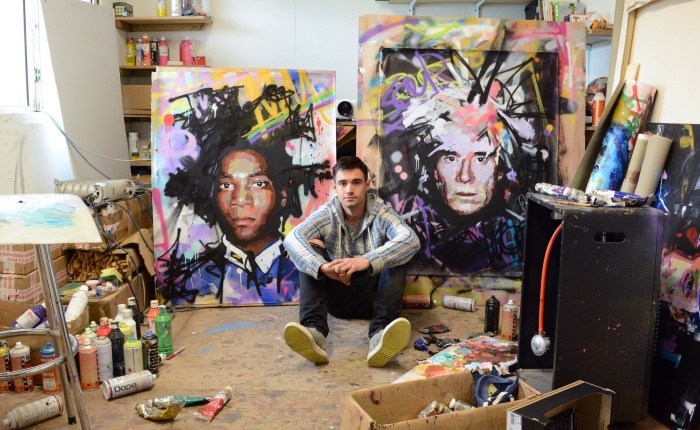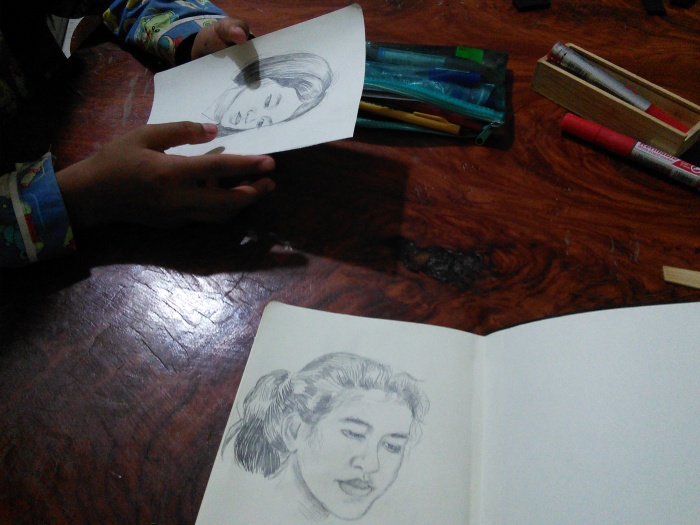For full-time artist and entrepreneur Richard Day, being an artist is a business, his paintings are products, and his life is golden. Richard brings home the bacon by selling commissioned artwork through his online Etsy shop: shipping paintings from his studio in Norwich to homes, restaurants and offices around the world.
Richard’s painting style is as fearless as his mindset. A carnival of colour with the unfettered energy of a rock anthem, his pieces combine graffitti with traditional portraiture in striking pop-art designs. The backgrounds are often filled with vibrant splashes of spray paint and scuffs of colour; the foregrounds daubed liberally with oil paint, depicting cultural icons, musicians and historical figures. Creating them can take anywhere between four hours and four days depending on the complexity of the design.
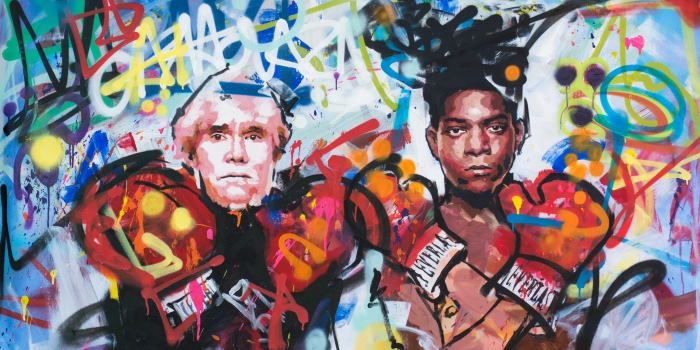
Richard started freelancing full-time in March 2017, and is already building up a storm with over 32k followers on Instagram and hundreds of clients. He’s also taken part in numerous events including live painting – his performances always leaving audiences agape (and asking for his number).
One would think that if being a full-time creative was as easy as Richard makes out, half the population would hand in their resignation to start a cookery school or knit tea cosies for a living. So why aren’t we writing to our bosses right now?
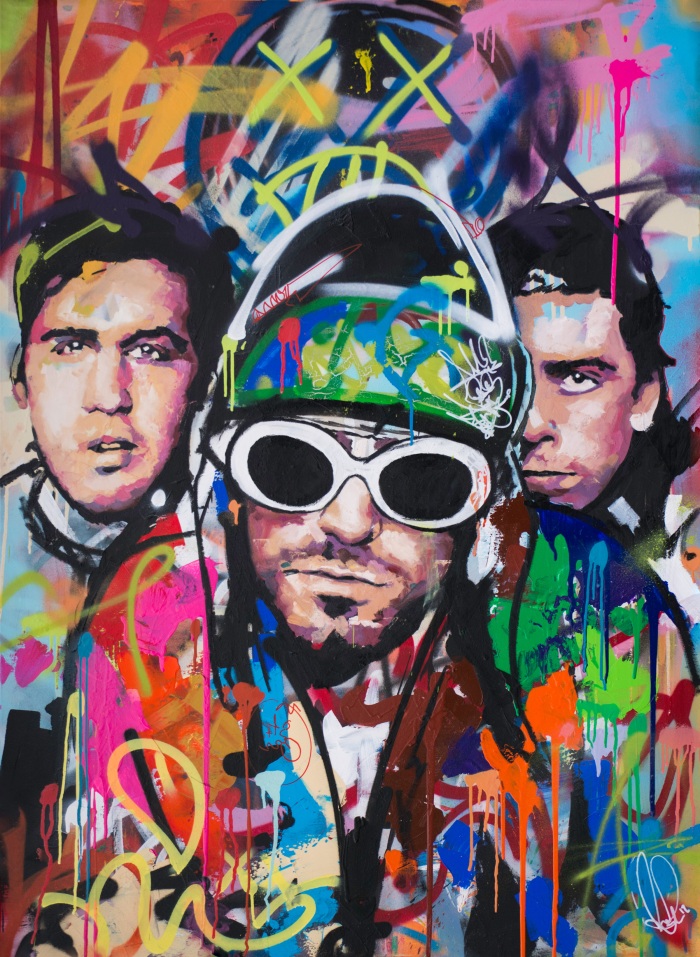
For some, becoming a full-time artist is a perilous step into the unknown. For Richard Day, it was a necessary manoeuvre to be free of bosses, gallery commission, and menial routines. “I always knew I wanted to work for myself but I never thought being a full time artist was an option.”
Richard admits: “Information isn’t a problem – we have an abundance of information that tells you how to do pretty much everything including how to be an artist. I’m sure there are people much more qualified to give people advice on the topic. My advice would be to just smash it – be very, very stubborn and say fuck it, I want to be an artist. And just go for it.” He adds: “You can champion good qualities such as perseverance, self belief and all that, but for me, stubbornness is key.”
Richard goes onto say there are things you need to take into account when working for yourself. For one, meticulous record keeping and sticking to deadlines is essential. “I’m very aware how many paintings I need to sell to make rent etc. and that is always something I need to consider.” Richard says the most difficult thing he faces is shipping the artwork out, which can often be delayed during the journey.
At the end of our chat I asked Richard what he thought he’d be doing for a living if he wasn’t an artist, to which he replied: “That’s a bloody good question. I have no idea. To be honest, I’d probably be working a shit job trying my best to be an artist.”
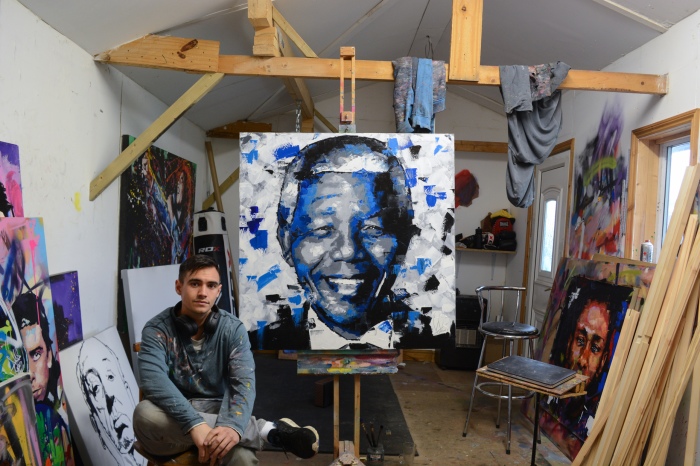
You can find – and commission – more of Richard’s incredible work on his online shop here.
This article is the second in a series of artist features, researched and written by me with many thanks to Richard for the great interview and photos.
– Karis
